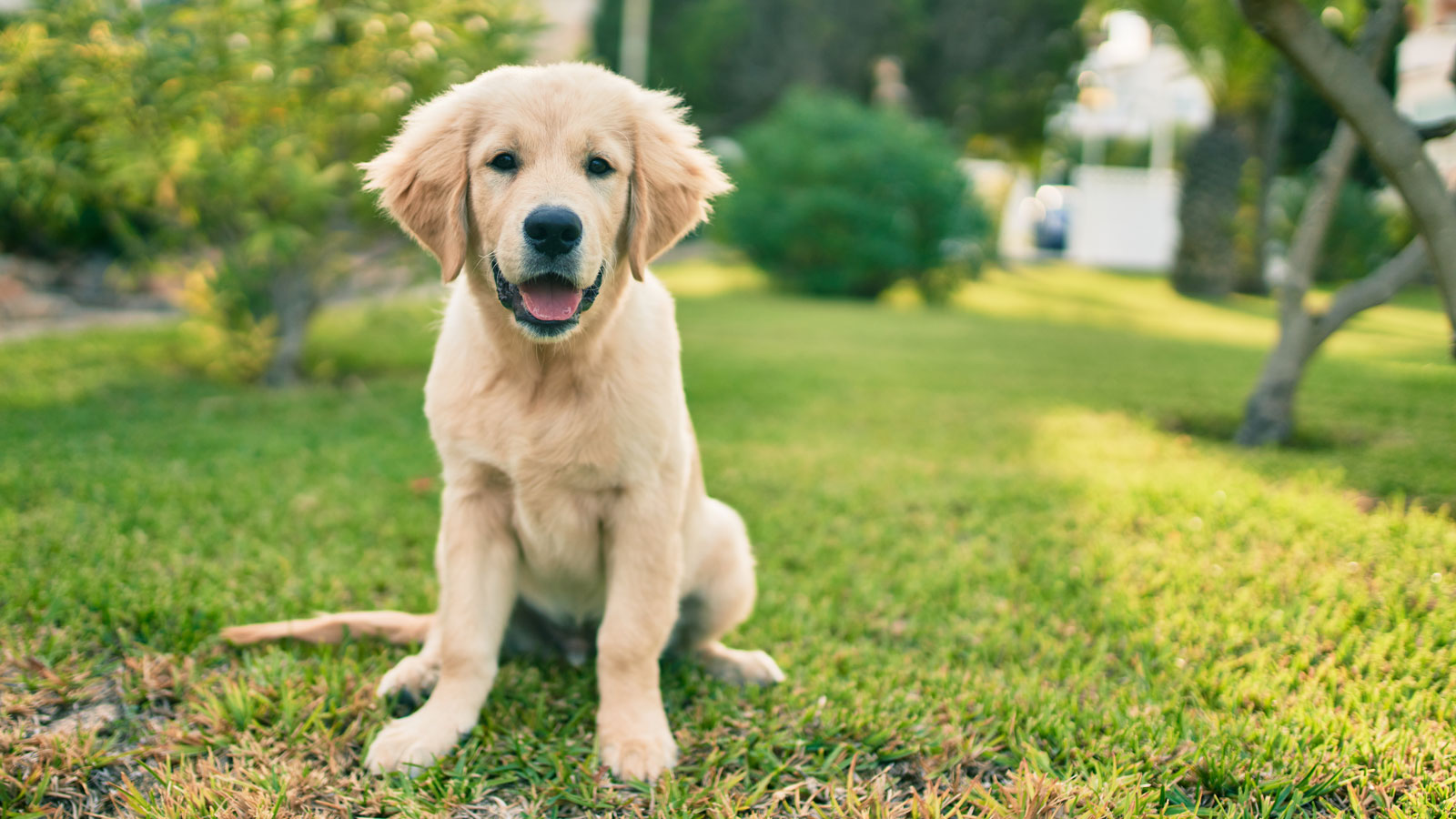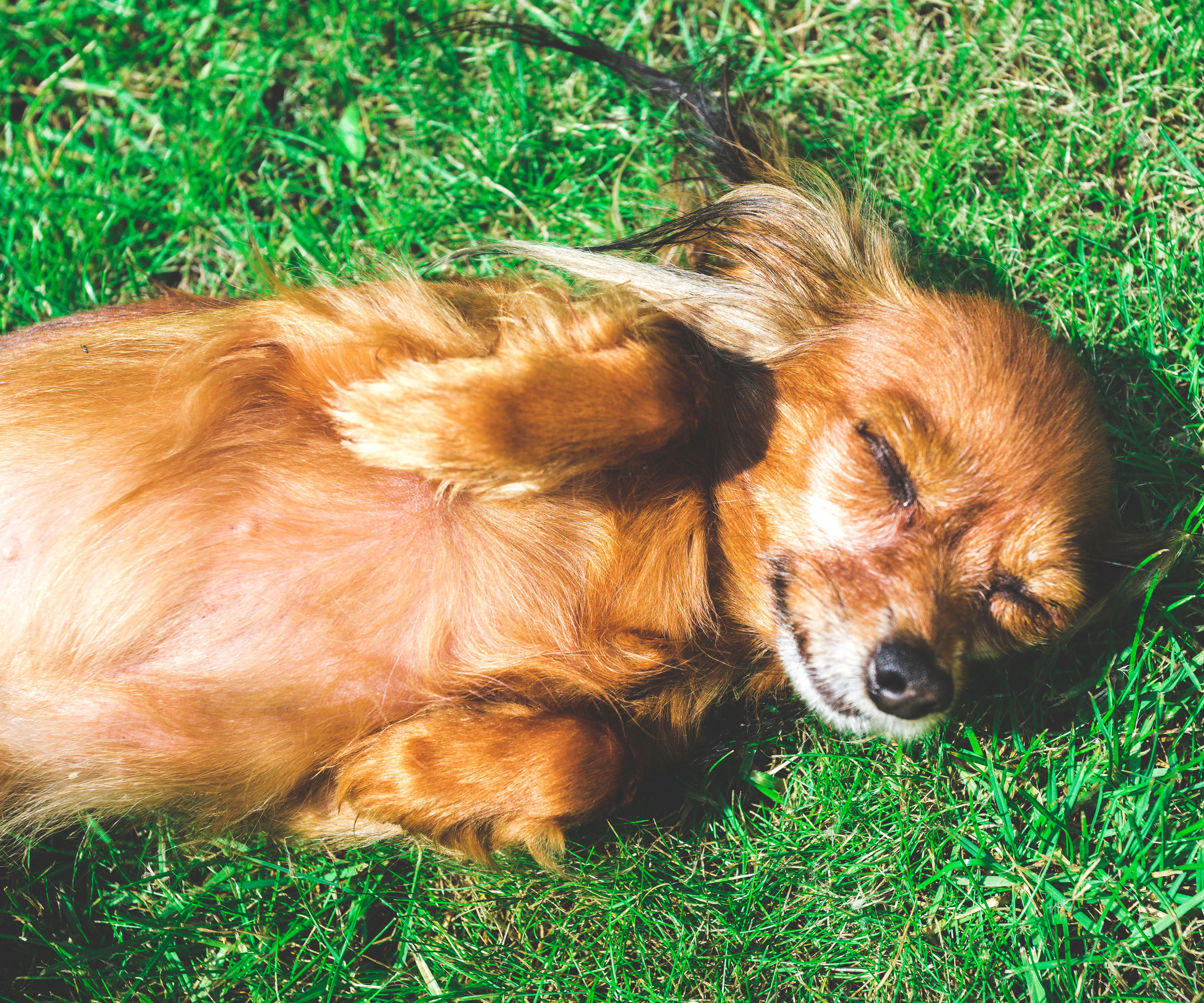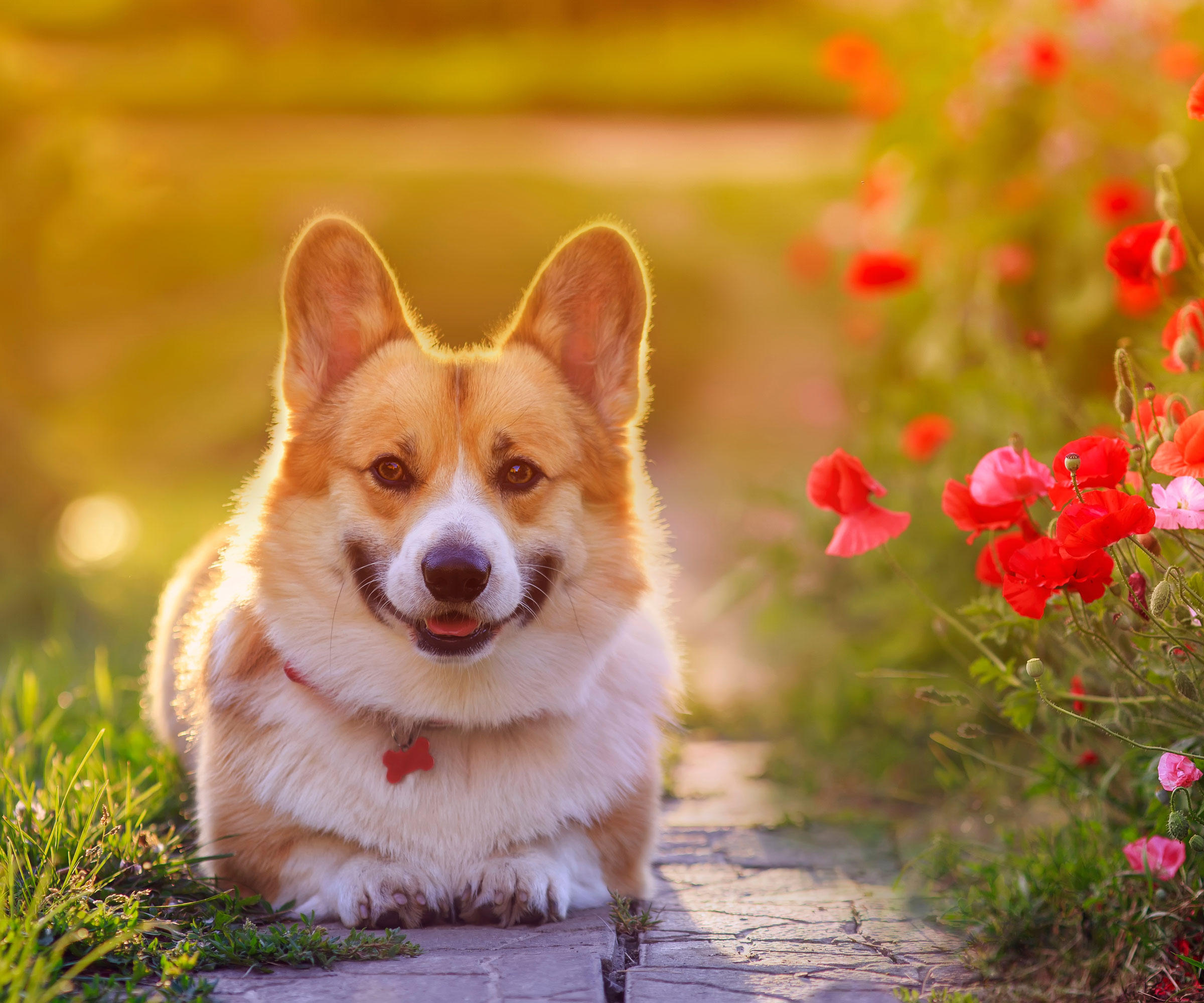Want A Backyard That's Gorgeous And Dog Friendly? These Chelsea Flower Show-Inspired Tips Are A Must For The Ultimate Dog Garden!
If you’re a gardener who loves dogs and owns your own pooch, here’s some great news. You can easily adapt your space with these great ideas from Monty Don’s Dog Garden


Dog lovers who garden will know these are two enormous passions that demand your full attention! While you may crave beautifully arranged borders or elaborate climbers, the reality is that a dog garden needs to be, first and foremost, a place where man (and woman)’s best friend can relax, have fun, and explore safely. A pooch-lover’s patch needs to allow canine companions to connect with nature (and their favorite humans) in a stimulating yet soothing space.
For anyone staring at their backyard and wondering how to make that happen, the recent unveiling of the RHS and BBC Radio 2 Dog Garden at the Chelsea Flower Show is cause for optimism, inspiration and delight. BBC Gardeners’ World presenter Monty Don and garden designer Jamie Butterworth used their combined expertise and experience to create a pooch-inspired paradise.
Focusing on accessible ideas and inexpensive planting notions, inspired by Monty’s own beloved dog pals, the Dog Garden features elements which dog-lovers everywhere can replicate. Of course, you need to make sure your plants are safe for dogs – but you can still have fun while growing for a dog in a garden. Here are some brilliant and easy tips for turning your yard into the ultimate hangout for your furry friend.
Best Ways to Create a Dog-Friendly Garden
Dogs have a natural ability to make themselves at home, so if you have any sort of yard, chances are your furry friend has found a favorite spot for sunbathing or sniffing. That said, it’s not hard to adapt even small growing spaces to create a dog-friendly garden. With the RHS and BBC Radio 2 Dog Garden at the Chelsea Flower Show, gardening presenter Monty Don has given us all a reason to be cheerful by showcasing a design that keeps it deliberately simple and manageable, whilst also being mindful of a dog’s core interests.
Our own resident expert and dog lover, Amy Draiss, has helped us put together a few key essentials for ‘dogscaping’ your garden. These tips are inspired by Monty’s gorgeous design, as well as the things she has learned from sharing a garden with her seven-year-old golden retriever, Manny. These tips demonstrate that the best ideas are often the simplest. These ideas can be applied to all breeds and sizes of pooch. Focusing on a dog’s fondness for exploring, having fun, relaxing, enjoying nature and bonding, these tips can be turned around quickly – so you can get on with having a lovely time with your pal in the garden.

Gardening Know How’s Amy has amassed extensive knowledge and experience of working with plants and gardening supplies. Hugely knowledgeable yet also passionate about making gardening accessible and fun, Amy is also a devoted pooch lover and mom to seven-year-old golden retriever, Manny.
1. Space and Grass for Play

With the Dog Garden at the Chelsea Flower Show, Monty Don has focused on simplicity. A key element is to provide a space for rest and play. Ideally, this will be some sort of lawn. Grass is an absolute essential for a happy doggie – enabling safe activity, rolling, ball chasing, sniffing, or just taking an afternoon nap. Monty encourages a mix of long and short textures, allowing for the most energetic or lazy dog moods.
“My dog Manny loves to lounge in areas of lawn that are freshly watered or still damp with morning dew – while taking in all the scents and sounds of the day,” says Gardening Know How’s Amy Draiss. “He enjoys the large expanse of lawn in the backyard where he can protect his territory, chase balls, and sniff every corner for signs of intruders.”
Sign up for the Gardening Know How newsletter today and receive a free copy of our e-book "How to Grow Delicious Tomatoes".
Don’t worry if grass is a little rough around the edges – a mix of textures is a good thing, and dogs aren’t fussy about how finely clipped your edges are. The best grass for your dog garden will be lush and healthy. Patch up any gaps and bare spots with a good seed repair kit like Scotts EZ Seed Patch & Repair Sun and Shade from Walmart – a great combination of quick-developing results and a control-release nutrient load for healthier looking lawns.
Be sure to add some ornamental grasses for variety, hiding places and sites for exploration (and smells). You can pick up some stunning tall grasses like Purple Lovegrass from Green Promise Farms at the Gardening Know How Shop. And don’t forget to make sure the perimeter of your yard is secured with adequate fencing for dogs.
2. Trees for Shade, Resting (and Balls!)

As well as a lawn where dogs can play, it’s important to provide a few spots that are in shade for at least a part of the day. Monty Don’s Dog Garden deploys large shrubs and trees to allow for canine chill time. Amy agrees that this is a key feature in her dog-friendly garden. “With the heavy coat of a golden retriever, shade is of the utmost importance. Whether it’s a spot beneath large shrubs or the canopy of a mature maple tree, a shady landscape is a welcome relief – especially during hot weather.”
Monty’s original tree for the RHS and BBC Radio 2 Dog Garden was a black mulberry tree, but it snapped on its way to the Chelsea Flower Show, so a multi-stem apple tree was selected. Monty’s dogs inspired this apple tree selection – as he pointed out, they love the ball-shape of apples. So when selecting trees for shade, steal a little inspiration from Monty and factor in trees that allow opportunities for discovery and enjoyment.
The Honeycrisp Apple Tree from Fast Growing Trees has a generous fruiting and harvest season for boisterous canine appetites! We also love the compact Fuji Apple Tree from Fast Growing Trees, bred specifically for home gardeners and delivering sweet and crunchy fruit in abundance. Select native trees for a natural homegrown advantage. Variety of scale (where space permits) is a great way to create pockets of interest. Other great trees for dog-friendly gardens include cherry trees, star magnolias, Oregon grapes and dogwoods (naturally!).
3. Pathways and Features for Adventures

Pathways were a key dog-specific landscaping idea in the Dog Garden. Monty got his own golden retriever, Ned, to help him design the perfect shape of pathway around the garden. As Monty pointed out, dogs don’t walk in a straight line. Quite often, they move from side to side, following their nose and any exciting smells they find. So any pathways you incorporate into your yard should be sympathetic to a pooch’s sense of smell and their taste for adventure, as well as being kind on their feet.
Think about dog sensory garden paths – you aren’t just linking areas of a garden, but creating thoughtful adventure trails for your four-legged pals. As Amy points out, be mindful of any plants or grasses that flank the route. Make sure planting selections for paths are robust and low-maintenance. “I learned to keep fragile or newly planted plants out of the way of Manny’s paths.," says Amy. "The right type of grass seed or pathway material should be considered for high-traffic areas, as grass can become worn down or muddy.”
Other features for adventure are areas for digging, and opportunities for playing with water. Keeping an area of the garden deliberately low-key and relatively free from planting gives the dog a chance to indulge in a spot of digging and exploring. It may not be possible to factor in a dedicated water feature. “I had a fish pond, but I had to remove it, because it became one of Manny’s favorite places to soak,” Amy says. “The idea of living with a fishy-smelling dog wasn’t something I wanted to deal with long-term.”
Still, that doesn’t mean you can’t give your dog access to a different water-based treat, as Amy points out. “While I'm watering the vegetable garden, my dog loves to dart in and drink straight from the watering wand.” There are some great watering wands on the market, but we love the RestMo Heavy Duty Watering Wand from Amazon, with its custom nozzle sprayer and flow control.
4. Plants for Joy and Safety

Designers of the Dog Garden applied a carefree but sympathetic approach to the idea of planting for a garden and dogs together. Plants included resilient daisies and clovers, plus pansies and asters for color, and sunflowers for texture and structural variety. Monty also incorporated pots of couch grass for dogs to nibble, as well as flowers like primrose which evoked a woodland feel. Where you are able to pique a pooch’s natural curiosity in a safe way, have fun mixing up different colors and textures.
Tap into the idea of a ‘shaggy’ planting style that bursts forth with vibrant shapes and different height levels to give some depth and room for exploration. Solid pops of orange and blue like marigolds and cornflowers can also delight dogs on their travels round the garden. Try jubilant swathes of durable blooms like Green Promise Farm ‘Vibrant Dome’ and Park Seed ‘Tiger Eyes’, both from the Gardening Know How Shop.
If there are specific areas of your garden you wish to reserve for crops, use raised planters, window boxes or hanging baskets. Again, going native with planting choices is a reliable way to create an environment that you know will be advantageous for your garden and local wildlife, as well as your fur babies. There’s a broad scope of native plants and pollinator flowers available in the Gardening Know How Shop.
Frequently Asked Questions
What types of gardens are best for dogs?
Gardens that incorporate elements of space, safety, adventure and sensory amusement are instant winners for happy pups of all ages. Some core elements that generally give dogs a sense of calm and well-being would be grass areas for play and resting, thoughtful walkways and digging corners, some good shady spots, and specific elements of sanctuary.
Of course, specific breeds and dog types will be more boisterous or mischievous. Depending on your pooch’s character, you may wish to cater more to gardening elements that encourage restfulness – or that allow your dog to tire himself out in a safe, peaceful environment.
Should any plants be avoided in dog gardens?
The main plants to be avoided in a dog-friendly garden are any considered toxic. Check with suppliers of any plants you buy to be fully informed of potential threats. Some common plants believed toxic to dogs include daffodils, crocuses and chrysanthemums. However, one plant said to be toxic to dogs – foxgloves – was incorporated into Monty’s garden design as a plant he has grown successfully at Longmeadow, his own garden.
Problematic shrubs and trees include holly, yew and rhododendron. In some cases, ingesting small amounts causes vomiting, but depending on the amount consumed (and the size and health of the dog), symptoms can be more severe. Other plants to avoid would be those with sharp edges. Any ornamental plants or crops that could be crushed or nibbled should be planted in a raised bed or in a hanging basket.
This article features products available from third party vendors on the Gardening Know How Shop. Keep in mind that our plant inventory is limited - so if you’re thinking of purchasing, don’t wait!

Janey is a former assistant editor of the UK’s oldest gardening magazine, Amateur Gardening, where she worked for five years. For the last few years, she has also been writing and editing content for digital gardening brands GardeningEtc and Homes & Gardens. She’s taken part in a range of conservation and rewilding projects for the Royal Horticultural Society (RHS) and the British Trust for Conservation Volunteers (BTCV) as a way of exploring her horticultural horizons. She is currently undertaking her RHS Level 2 certificate in The Principles of Plant Growth and Development.
